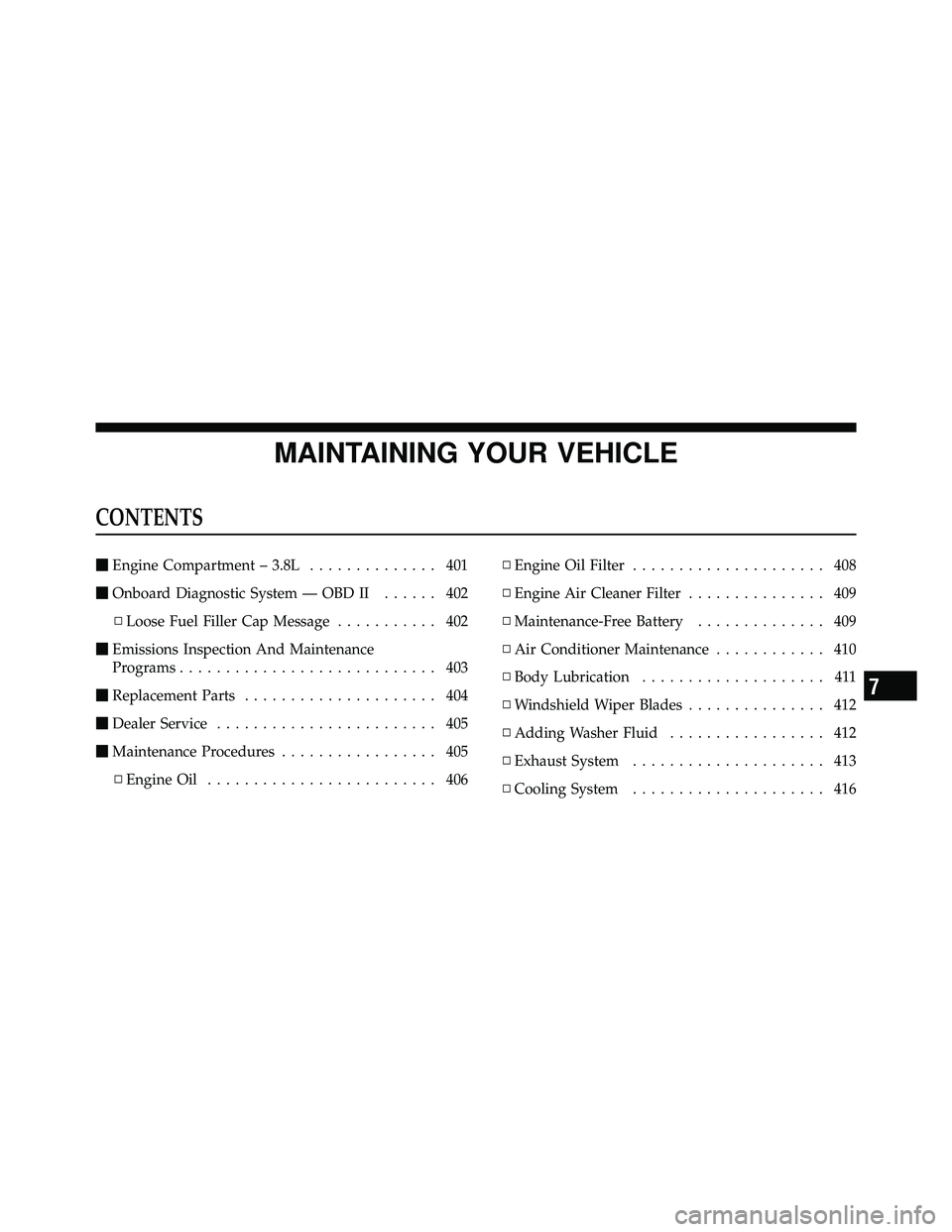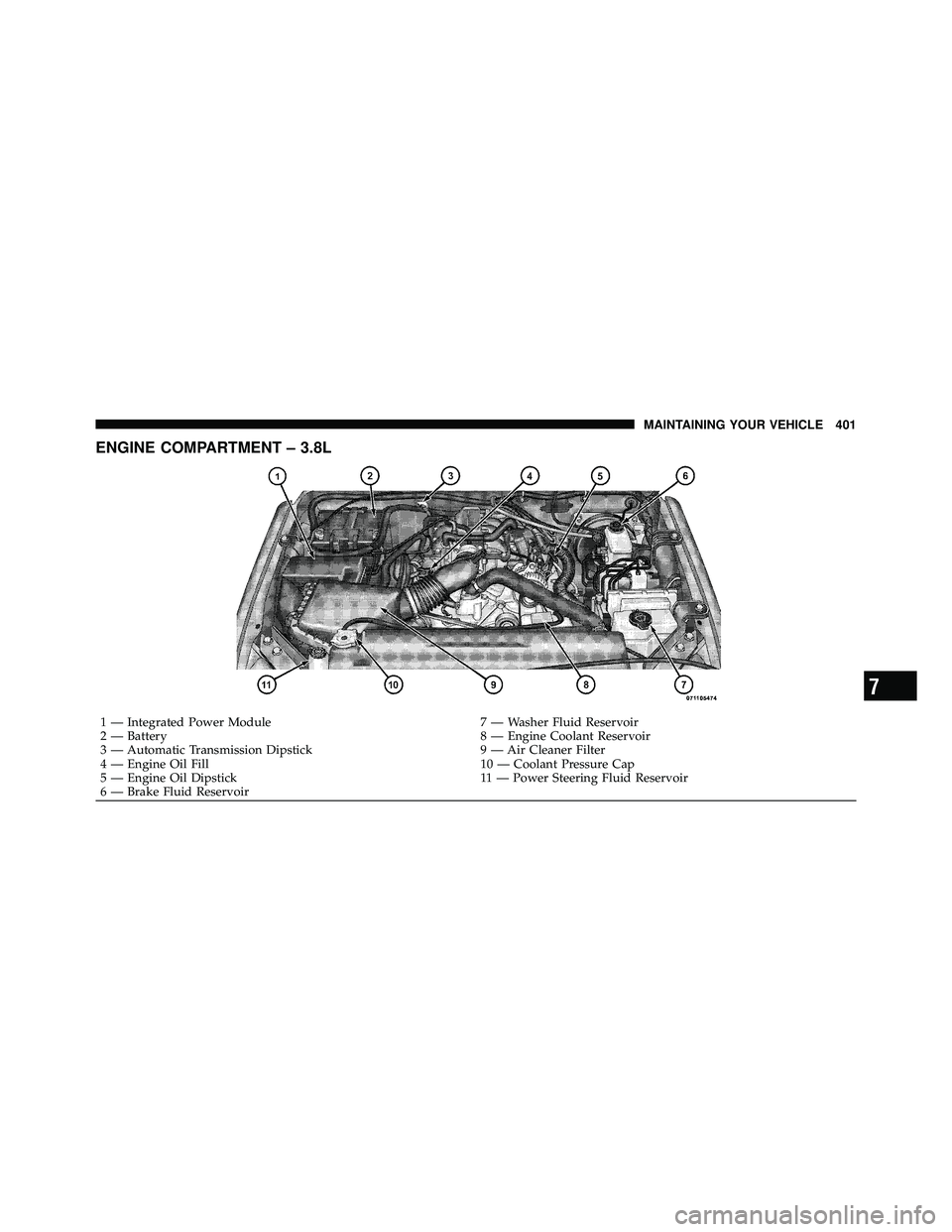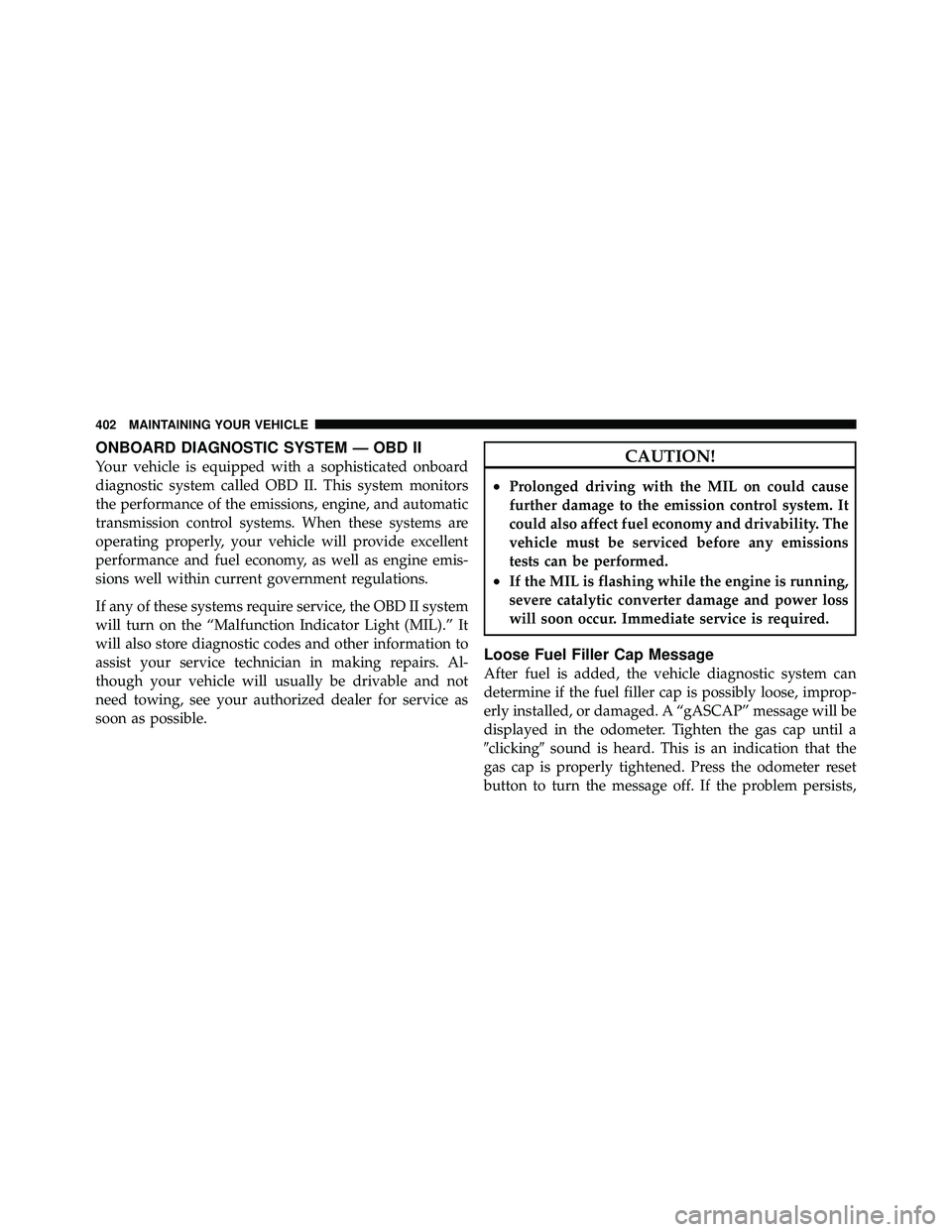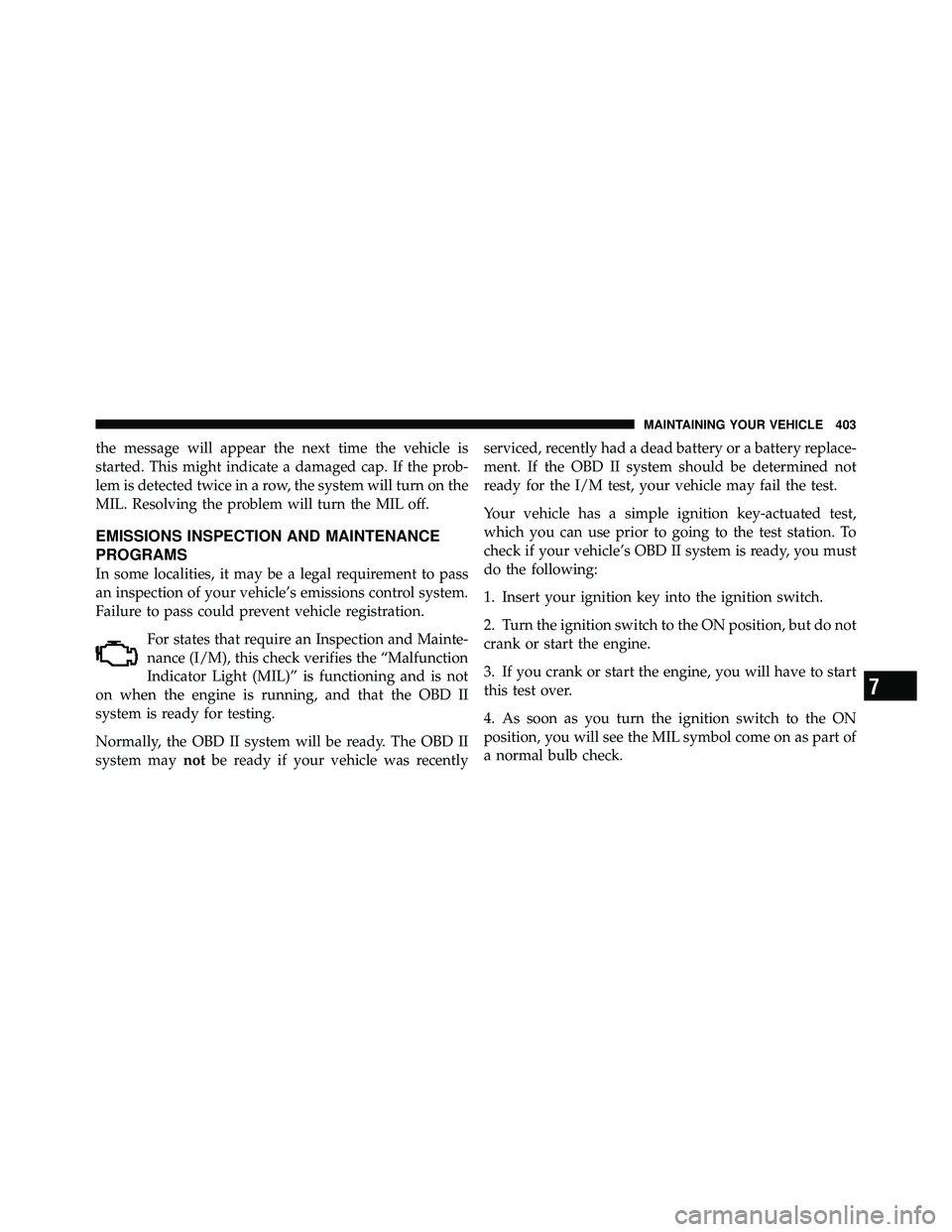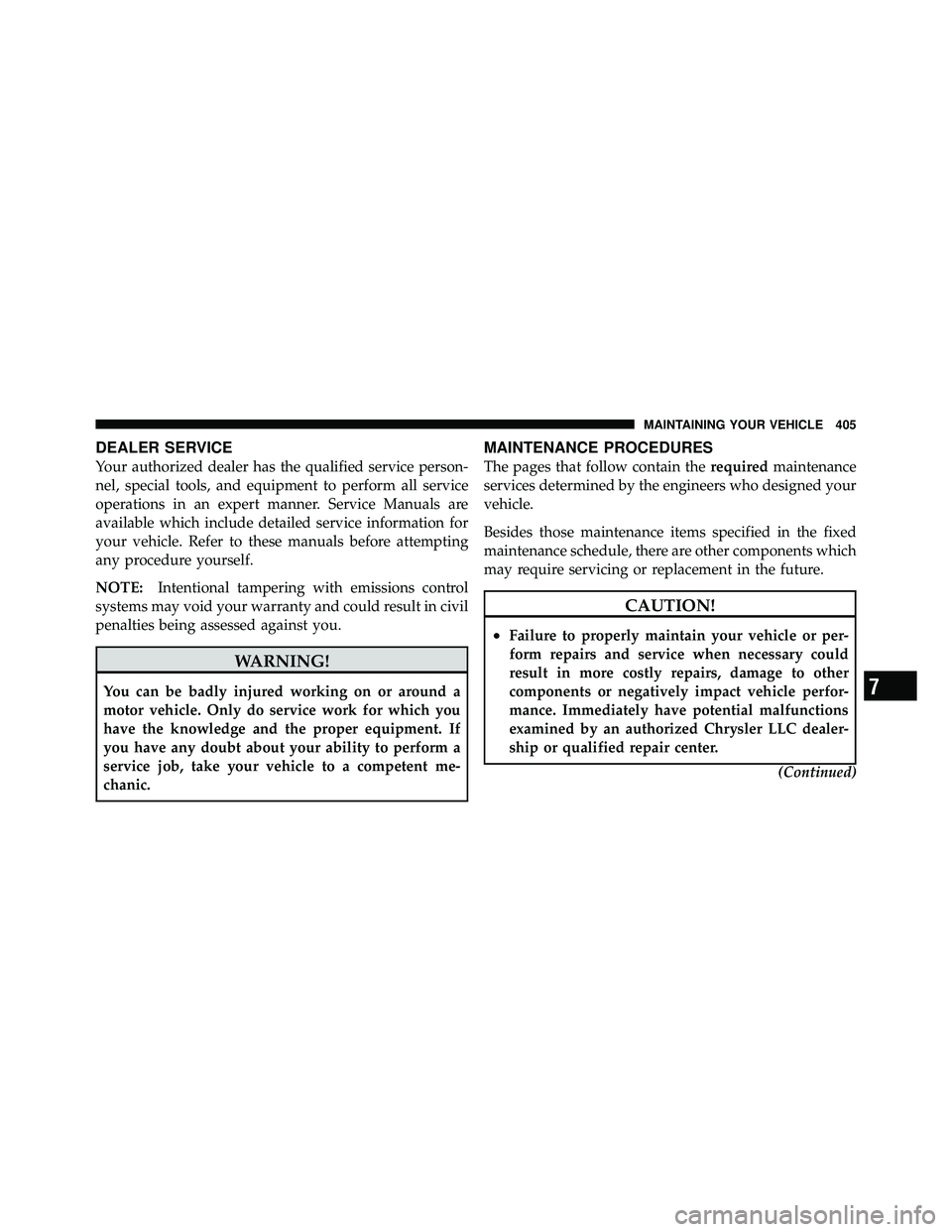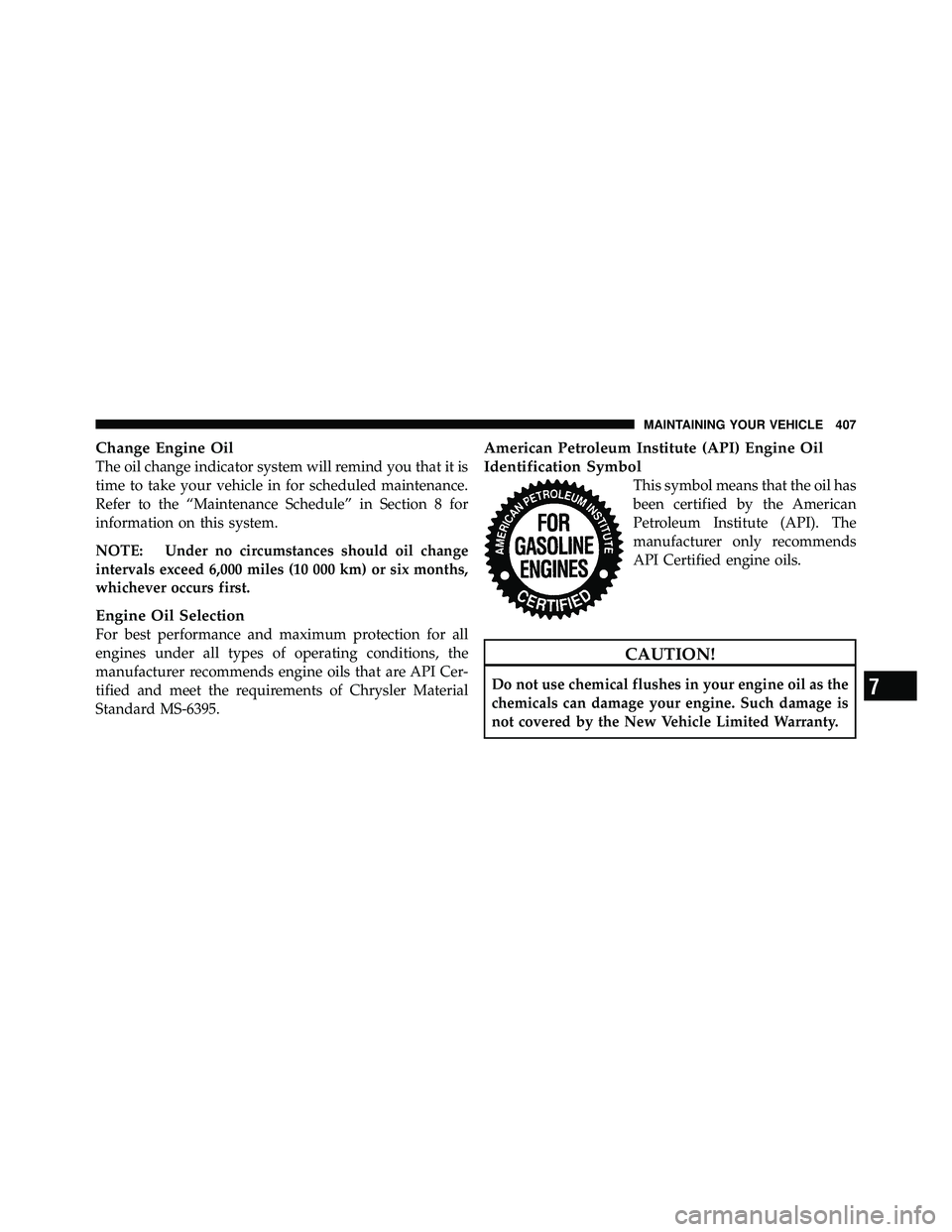JEEP WRANGLER 2009 Owners Manual
WRANGLER 2009
JEEP
JEEP
https://www.carmanualsonline.info/img/16/56060/w960_56060-0.png
JEEP WRANGLER 2009 Owners Manual
Trending: engine overheat, airbag off, wiper fluid, inflation pressure, trip computer, tires, remove seats
Page 401 of 502
Page 402 of 502
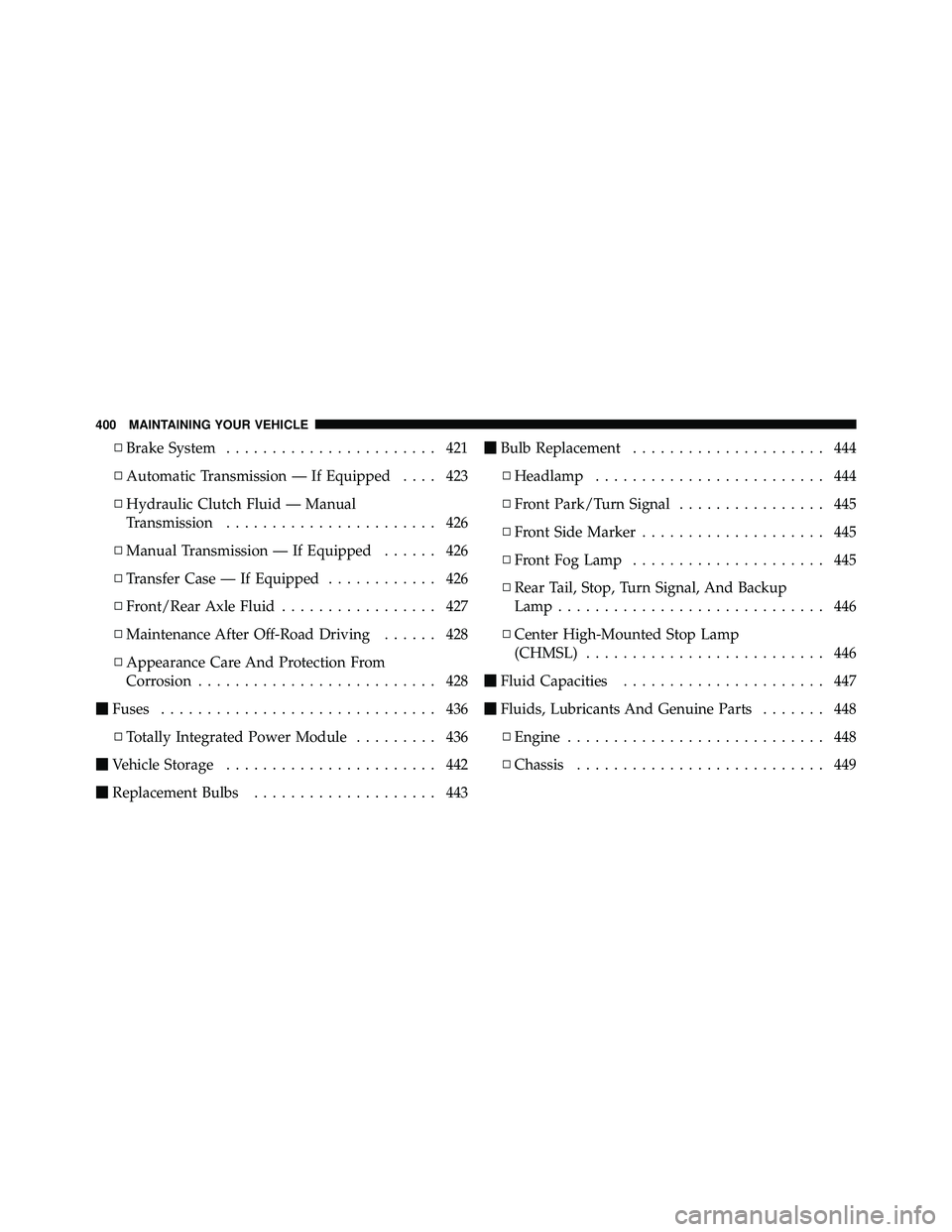
▫Brake System ....................... 421
▫ Automatic Transmission — If Equipped .... 423
▫ Hydraulic Clutch Fluid — Manual
Transmission ....................... 426
▫ Manual Transmission — If Equipped ...... 426
▫ Transfer Case — If Equipped ............ 426
▫ Front/Rear Axle Fluid ................. 427
▫ Maintenance After Off-Road Driving ...... 428
▫ Appearance Care And Protection From
Corrosion .......................... 428
� Fuses .............................. 436
▫ Totally Integrated Power Module ......... 436
� Vehicle Storage ....................... 442
� Replacement Bulbs .................... 443 �
Bulb Replacement ..................... 444
▫ Headlamp ......................... 444
▫ Front Park/Turn Signal ................ 445
▫ Front Side Marker .................... 445
▫ Front Fog Lamp ..................... 445
▫ Rear Tail, Stop, Turn Signal, And Backup
Lamp ............................. 446
▫ Center High-Mounted Stop Lamp
(CHMSL) .......................... 446
� Fluid Capacities ...................... 447
� Fluids, Lubricants And Genuine Parts ....... 448
▫ Engine ............................ 448
▫ Chassis ........................... 449
400 MAINTAINING YOUR VEHICLE
Page 403 of 502
Page 404 of 502
ONBOARD DIAGNOSTIC SYSTEM — OBD II
Your vehicle is equipped with a sophisticated onboard
diagnostic system called OBD II. This system monitors
the performance of the emissions, engine, and automatic
transmission control systems. When these systems are
operating properly, your vehicle will provide excellent
performance and fuel economy, as well as engine emis-
sions well within current government regulations.
If any of these systems require service, the OBD II system
will turn on the “Malfunction Indicator Light (MIL).” It
will also store diagnostic codes and other information to
assist your service technician in making repairs. Al-
though your vehicle will usually be drivable and not
need towing, see your authorized dealer for service as
soon as possible.
Page 405 of 502
7
MAINTAINING YOUR VEHICLE 403
Page 406 of 502

5. Approximately 15 seconds later, one of two things will
happen:a. The MIL will flash for about 10 seconds and then
return to being fully illuminated until you turn OFF
the ignition or start the engine. This means that your
vehicle’s OBD II system is not readyand you should
not proceed to the I/M station.
b. The MIL will not flash at all and will remain fully
illuminated until you turn OFF the ignition or start the
engine. This means that your vehicle’s OBD II system
is ready and you can proceed to the I/M station.
If your OBD II system is not ready,you should see your
authorized dealer or repair facility. If your vehicle was
recently serviced or had a battery failure or replacement,
you may need to do nothing more than drive your
vehicle as you normally would in order for your OBD II
system to update. A recheck with the above test routine
may then indicate that the system is now ready. Regardless of whether your vehicle’s OBD II system is
ready or not, if the MIL is illuminated during normal
vehicle operation you should have your vehicle serviced
before going to the I/M station. The I/M station can fail
your vehicle because the MIL is on with the engine
running.
REPLACEMENT PARTS
Use of genuine MOPAR�
parts for normal/scheduled
maintenance and repairs is highly recommended to en-
sure the designed performance. Damage or failures
caused by the use of non-MOPAR� parts for maintenance
and repairs will not be covered by the manufacturer’s
warranty.
404 MAINTAINING YOUR VEHICLE
Page 407 of 502
Page 408 of 502

CAUTION! (Continued)
•Your vehicle has been built with improved fluids
that protect the performance and durability of
your vehicle and also allow extended maintenance
intervals. Do not use chemical flushes in these
components as the chemicals can damage your
engine, transmission, power steering or air condi-
tioning. Such damage is not covered by the New
Vehicle Limited Warranty. If a flush is needed
because of component malfunction, use only the
specified fluid for the flushing procedure.
Engine Oil
Checking Oil Level
To assure proper lubrication of your vehicle’s engine, the
engine oil must be maintained at the correct level. The
best time to check the engine oil level is about five
minutes after a fully warmed up engine is shut off or
before starting the engine after it has sat overnight.
Checking the oil while the vehicle is on level ground will
improve the accuracy of the oil level readings. Always
maintain the oil level within the SAFE zone on the
dipstick. Adding 1 U.S. Quart (0.95L) of oil when the
reading is at the bottom of the SAFE zone will result in a
reading at the top of the safe zone on these engines.
Page 409 of 502
7
MAINTAINING YOUR VEHICLE 407
Page 410 of 502
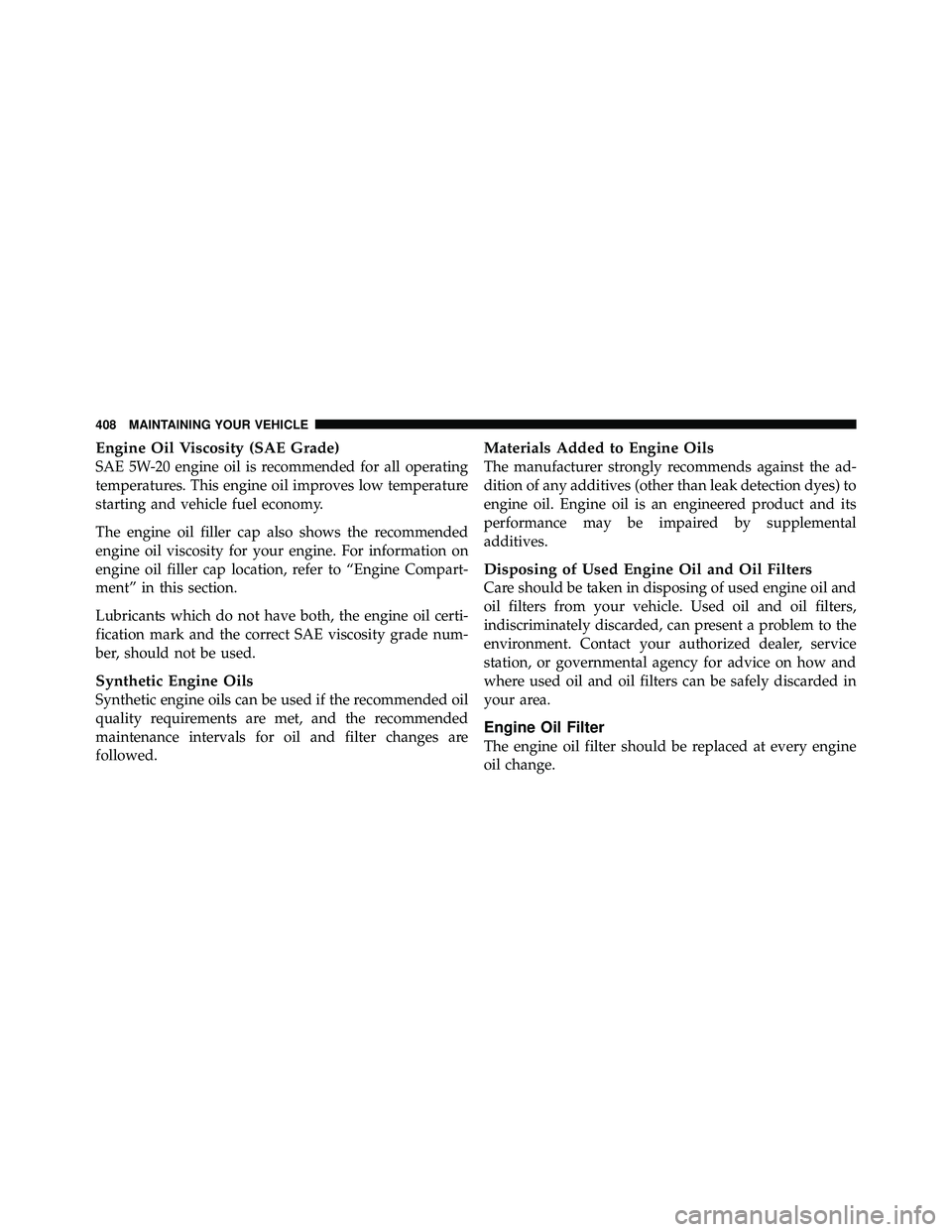
Engine Oil Viscosity (SAE Grade)
SAE 5W-20 engine oil is recommended for all operating
temperatures. This engine oil improves low temperature
starting and vehicle fuel economy.
The engine oil filler cap also shows the recommended
engine oil viscosity for your engine. For information on
engine oil filler cap location, refer to “Engine Compart-
ment” in this section.
Lubricants which do not have both, the engine oil certi-
fication mark and the correct SAE viscosity grade num-
ber, should not be used.
Synthetic Engine Oils
Synthetic engine oils can be used if the recommended oil
quality requirements are met, and the recommended
maintenance intervals for oil and filter changes are
followed.
Materials Added to Engine Oils
The manufacturer strongly recommends against the ad-
dition of any additives (other than leak detection dyes) to
engine oil. Engine oil is an engineered product and its
performance may be impaired by supplemental
additives.
Disposing of Used Engine Oil and Oil Filters
Care should be taken in disposing of used engine oil and
oil filters from your vehicle. Used oil and oil filters,
indiscriminately discarded, can present a problem to the
environment. Contact your authorized dealer, service
station, or governmental agency for advice on how and
where used oil and oil filters can be safely discarded in
your area.
Engine Oil Filter
The engine oil filter should be replaced at every engine
oil change.
408 MAINTAINING YOUR VEHICLE
Trending: tow bar, interior lights, wiring, towing capacity, inflation pressure, brake, service interval
